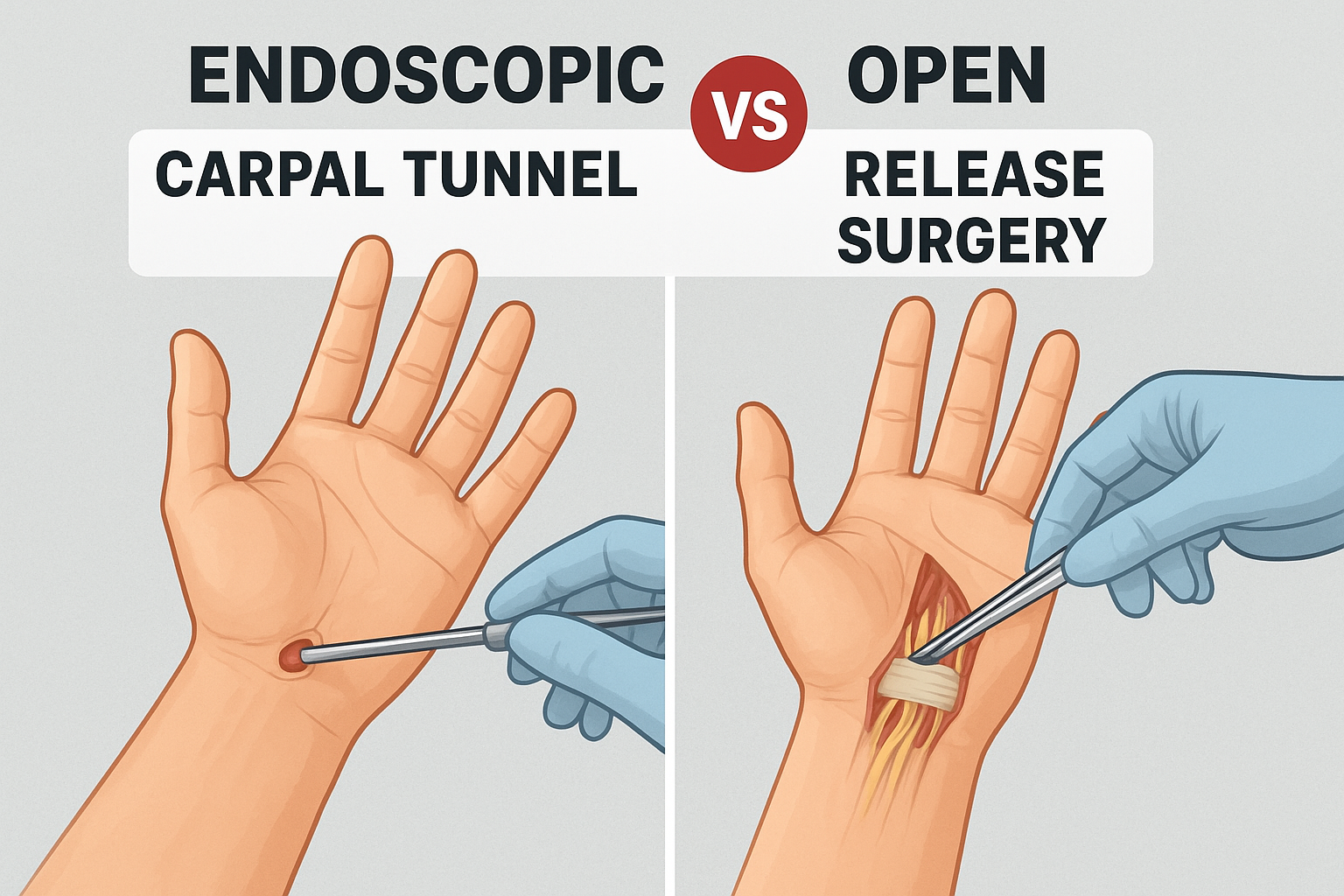Carpal Tunnel Syndrome (CTS) is one of the most common conditions affecting the hand and wrist, often causing pain, numbness, and tingling that interferes with daily life. When conservative treatments like splints, medications, or physiotherapy don’t provide relief, Carpal Tunnel Release Surgery becomes the next step. But which approach is right for you—Endoscopic or Open Surgery?
As explained by Dr. Potla Sivaiah, the best joint replacement surgeon in India, both techniques aim to relieve pressure on the median nerve by cutting the transverse carpal ligament. However, they differ in how the procedure is performed, recovery time, and potential outcomes.
Open Carpal Tunnel Release Surgery
This traditional method involves a small incision in the palm to directly access and cut the ligament. It allows clear visualization of the area and is often recommended for severe cases. While highly effective, recovery may take longer, with mild tenderness in the palm lasting for weeks.
Endoscopic Carpal Tunnel Release Surgery
A modern, minimally invasive technique, this involves one or two tiny incisions where a camera-guided endoscope is inserted to release the ligament. The benefits include faster recovery, less postoperative pain, and minimal scarring. However, it requires advanced surgical expertise and may not suit all patients.
Choosing the Right Approach
The decision depends on factors like the severity of symptoms, overall health, occupation, and lifestyle needs. Dr. Potla Sivaiah, the best joint replacement surgeon in India, emphasizes the importance of personalized consultation to determine the most effective and safest option for each patient.
Both Endoscopic and Open Carpal Tunnel Release Surgeries are proven to provide long-term relief and restore hand function. By consulting an experienced specialist like Dr. Potla Sivaiah, patients can make an informed decision tailored to their needs, ensuring quicker recovery and a better quality of life.

